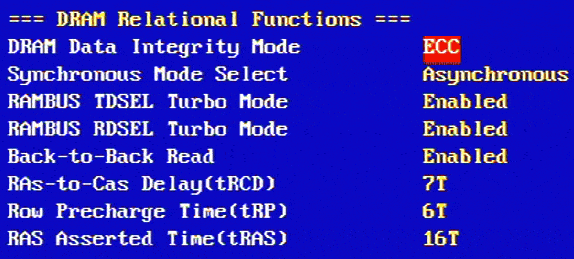Rambus Is Alive: SiS 658 In An Exclusive Test
New Opportunity For Rambus: SiS 658 And 659, Continued
In a private interview with THG, one of the Rambus employees in charge stated that the time had now come for building a perfect RDRAM chipset. After all, the last development of the 850 chipset (still within the scope of the cast-iron Intel cooperation) dates back to over 3 years ago. And one fact that is already known today is that Rambus is developing the RDRAM interface for the SiS 659 independently and, with this move, is aiming to take a decisive step towards attaining ultimate performance. The key data of the planned high-flyer are very convincing, from a technical viewpoint: 4-channel Rambus interface for new PC1333 modules, which, nevertheless, is said to run with a true 667 MHz. By way of comparison, with DDR, the maximum limit currently lies in the region of 233 MHz, although 250 MHz (DDR500) will supposedly be available shortly. As a memory producer, only Samsung will dominate the scene. Chip manufacturing using conventional 0.18 micron technology is still performed by TSMC in Taiwan, since SiS ranks among the so-called fab-less manufacturers.
Until the time comes, the SiS 658 chipset , which is the first SiS proprietary development in this area, is supposed to offer techies a cost-efficient alternative to the wide DDR range from Intel. The reason its quite clear - anyone who has opted for Rambus once and can call at least an Intel 850 board his own, will not switch over to a DDR solution just like that. After all, the advantages of the serial memory technology are plain to see. Particularly when large volumes of data are to be transmitted in one go.

At full speed: in our test, we used PC1200 modules, which could be operated with maximum timing.

Asus P4G8X: Default 134.6 MHz FSB!
In our lab in Munich, we pitted the SiS 658 (Abit SI7) against the Intel 850E (Asus P4T533-C) and the Intel 845PE (Asus P4PE). What are the odds of Rambus staging a comeback when PC1200, and later even PC1333, kick in? Won't this DDR technology with its parallel bus system run into a dead end sooner or later?
Stay on the Cutting Edge
Join the experts who read Tom's Hardware for the inside track on enthusiast PC tech news — and have for over 25 years. We'll send breaking news and in-depth reviews of CPUs, GPUs, AI, maker hardware and more straight to your inbox.
Current page: New Opportunity For Rambus: SiS 658 And 659, Continued
Prev Page New Opportunity For Rambus: SiS 658 And 659 Next Page Comparison: Chipsets For Pentium 4Most Popular

